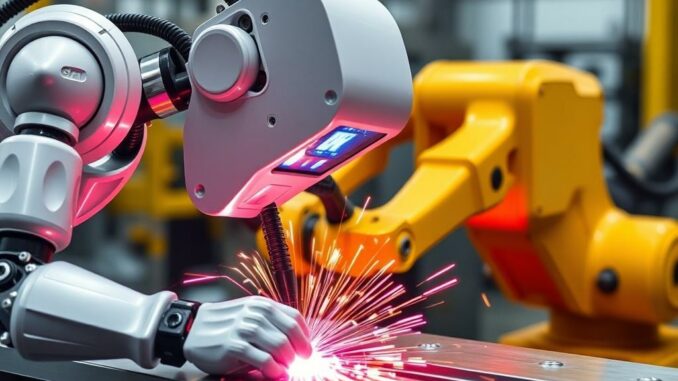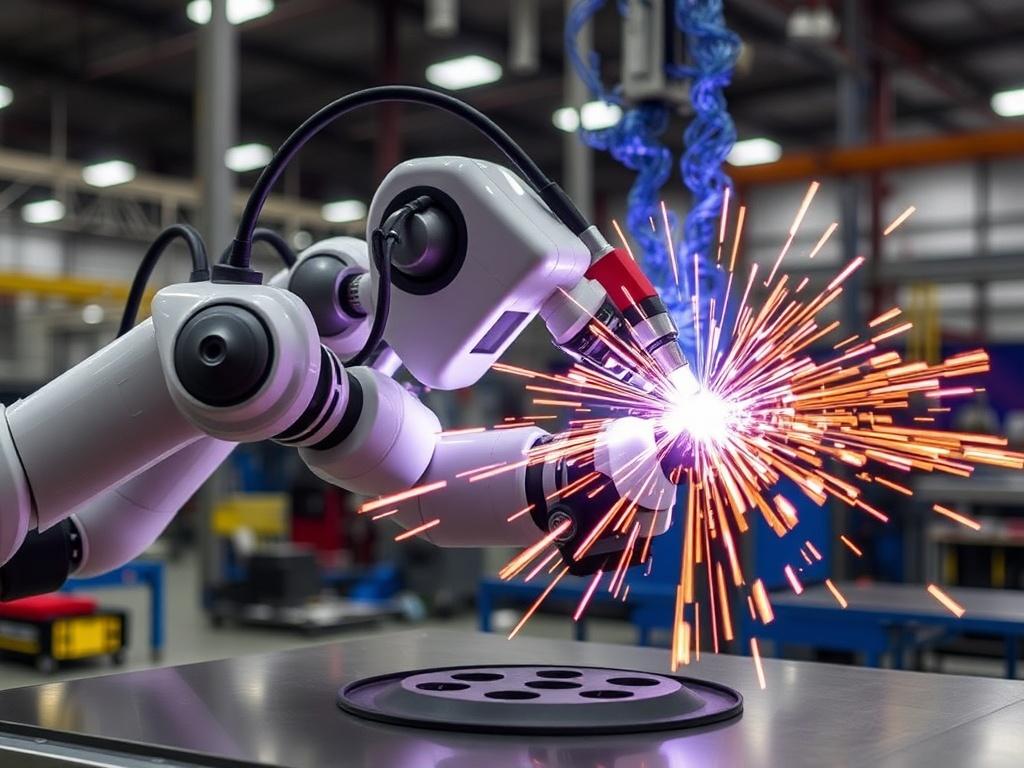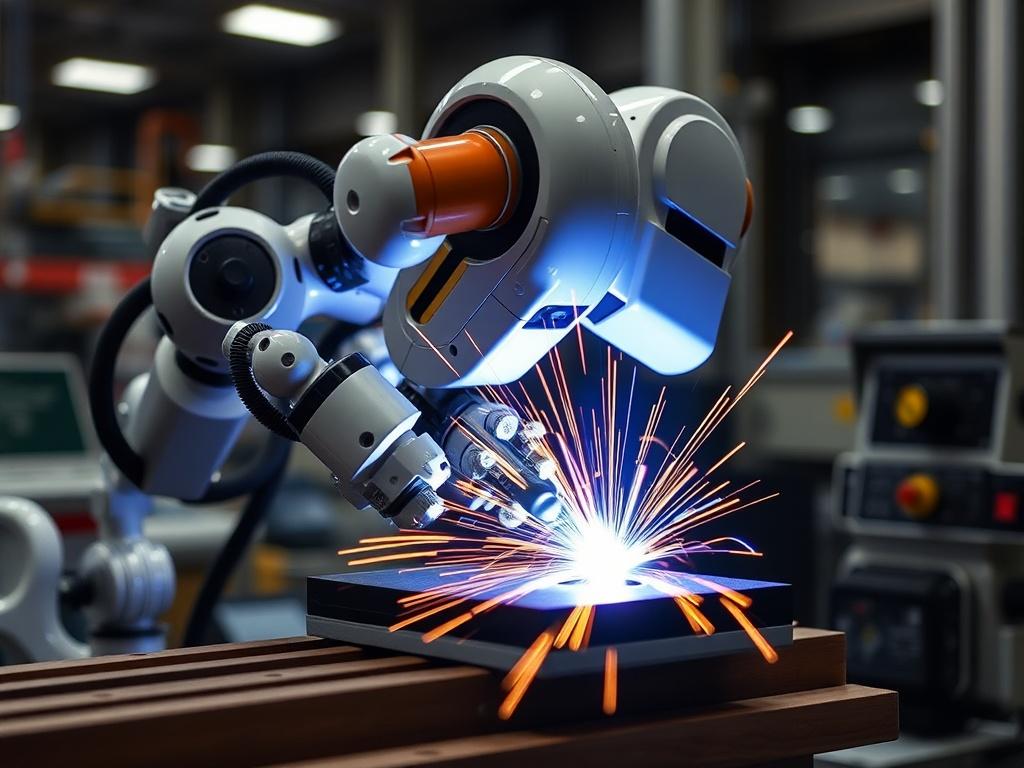
SQLITE NOT INSTALLED
In today’s fast-paced world, manufacturing is rapidly evolving, and at the heart of this evolution lies robotic welding — a technology that is transforming the industry as we know it. From car assembly lines to aerospace manufacturing, robotic welding is redefining efficiency, quality, and safety. If you have ever wondered how robots are changing the art of welding, you are in the right place. This article will guide you through the intricacies of robotic welding, why it’s hailed as the future of manufacturing, and what this means for industries worldwide.
What is Robotic Welding?
Robotic welding refers to the use of automated, computer-controlled systems that execute welding tasks, replacing or assisting human welders. Unlike traditional manual welding, where skilled laborers manually join metal parts using a welding torch, robotic welding utilizes robotic arms equipped with welding tools to perform the same task with high precision and consistency.
Imagine a robotic arm moving seamlessly, welding joints tirelessly without breaks, heat exhaustion, or human error. This is the core advantage of robotic welding systems. These robots can perform a wide range of welding processes including MIG (Metal Inert Gas), TIG (Tungsten Inert Gas), spot welding, and even laser welding. The equipment is intricately programmed and often integrated with sensors and vision systems to adapt to different welding scenarios.
The Evolution of Welding Technology
Before diving deeper into robotic welding, it’s helpful to look at the evolution of welding technology. Traditional welding dates back to the early 20th century, involving mostly manual processes. Over the decades, as industries demanded more speed and precision, semi-automated systems like mechanized welding machines were introduced.
By the late 1970s and early 1980s, fully automated robotic systems began to emerge, primarily in automotive factories. Early robots were rudimentary, with limited adaptability. However, continuous advancements in computer technology, sensors, and artificial intelligence have significantly enhanced robots’ welding capabilities. Today’s robotic welders are incredibly versatile and intelligent, often working side-by-side humans in hybrid manufacturing environments.
How Does Robotic Welding Work?

The functionality of robotic welding is a harmonious blend of robotics engineering, welding science, and computer control. At its core, a robotic welding system consists of three main components:
- Robotic Arm: This is the mechanical part that moves the welding tool with six or more axes of movement, allowing welding from multiple angles.
- Controller: The controller acts as the brain, processing input from programming software and sensors to guide the arm’s movement and welding parameters.
- Welding Power Source: This component provides the energy needed to create the weld, whether electrical current for arc welding or laser energy for laser welding.
Before the system begins welding, the robot is programmed with precise specifications. This is typically achieved through offline programming where engineers simulate the welding process using CAD (Computer-Aided Design) models. Once deployed on the factory floor, the robot follows these instructions to execute consistent welds at high speed.
Some advanced systems also incorporate machine learning algorithms and real-time sensor feedback to adapt to any variances in the material or position, improving quality and reducing scrap rates.
Popular Welding Processes in Robotics
| Welding Process | Description | Common Applications |
|---|---|---|
| MIG Welding | Uses a continuously fed wire electrode and shielding gas to weld metals. | Automotive body assembly, general fabrication. |
| TIG Welding | Uses a non-consumable tungsten electrode and inert gas for precise welds. | Aerospace, medical device manufacturing. |
| Spot Welding | Joins metal sheets by applying pressure and heat at distinct points. | Automotive chassis and panel welding. |
| Laser Welding | Uses concentrated laser beams to join metals with minimal heat distortion. | Electronics, precision parts. |
Advantages of Robotic Welding in Manufacturing
The surge in adoption of robotic welding is primarily driven by its numerous benefits over manual welding techniques. Let’s explore some of these advantages:
1. Enhanced Precision and Quality
One of the primary benefits of robotic welding is the extraordinary precision with which welds are executed. Robots eliminate the inconsistencies caused by human factors like fatigue or skill variation. This means fewer defects, better weld bead consistency, and ultimately, higher product quality.
2. Increased Production Speed
Robots work tirelessly at a consistent pace, enabling manufacturers to significantly increase production throughput. What takes a human welder hours to complete can be done much faster without compromising quality, helping factories keep up with high demand.
3. Improved Safety
Welding inherently involves risks such as exposure to harmful fumes, heat, and UV radiation. Robotic welding systems help mitigate these risks by removing humans from direct contact with hazardous environments, thus improving workplace safety.
4. Cost Efficiency in the Long Run
Though the initial investment in robotic welding equipment can be considerable, the lower labor costs, reduced scrap, and consistent quality deliver impressive long-term savings. Additionally, robots reduce downtime because they don’t require breaks or shift changes.
5. Flexibility and Scalability
Modern robotic welding systems are extremely flexible, able to switch between different welding tasks with minimal reprogramming. This adaptability allows manufacturers to respond swiftly to changing production needs or product designs.
Common Applications of Robotic Welding

Robotic welding is no longer limited to the automotive sector, although it remains a core field of application. Today, its usage spans a wide range of industries, including:
- Automotive Manufacturing: The automotive industry was among the pioneers of robotic welding. Robots are extensively used for body assembly, exhaust systems, and chassis welding.
- Aerospace: High-precision welding is critical in aerospace, where robotic TIG and laser welding ensure strong and lightweight joints.
- Shipbuilding: Robotic welding enhances the efficiency and quality of welding large ship components, reducing production timelines.
- Electronics: Laser and micro-welding robots assemble delicate electronic components with micron-level precision.
- Construction Equipment: Heavy machinery and construction equipment manufacturers use robotic welding to produce durable and high-quality parts.
Challenges and Limitations

Despite its promising potential, robotic welding does face certain challenges that must be addressed to fully harness its capabilities.
High Initial Investment
The upfront cost for purchasing and integrating robotic welding systems can be a hurdle, especially for small and medium-sized enterprises (SMEs). Robots require not just the hardware but also specialized software and skilled personnel for programming and maintenance.
Complex Welds and Material Variability
While robotic systems excel at repetitive, simple welding tasks, they can struggle with complex weld geometries or highly variable materials where human intuition and flexibility still provide an edge.
Workforce Adaptation
The rise of robotic welding means the manufacturing workforce needs to adapt, acquiring new skills related to robotics operation, programming, and maintenance. This shift can cause transitional challenges in labor markets.
Maintenance and Downtime
Like any advanced machinery, robotic welding systems require regular maintenance. Unexpected breakdowns can lead to costly production halts, so having skilled technicians and a preventive maintenance program is essential.
The Future of Robotic Welding
As we look ahead, it’s clear that robotic welding will continue to grow and evolve, driven by technological advancements and global manufacturing demands. Here are some key trends shaping its future:
Artificial Intelligence and Machine Learning Integration
Next-generation robotic welders will increasingly incorporate AI and machine learning algorithms. This will help robots learn from welding data, evolve their techniques, and self-correct in real time — vastly improving weld quality and reducing waste.
Collaborative Robots (Cobots)
Cobots are robots designed to work alongside humans safely without safety cages. These will democratize robotic welding by allowing smaller shops and less automated factories to benefit from the technology without major infrastructure changes.
Advanced Sensors and Vision Systems
High-resolution cameras and sensory equipment are enabling robots to “see” and sense the materials they weld more accurately. This leads to dynamic adjustments for irregularities and heightened precision.
Expanded Application Areas
With growing capabilities, robotic welding is expected to enter new sectors such as renewable energy (e.g., wind turbine manufacturing), medical device fabrication, and customized manufacturing where precision and repeatability are crucial.
How to Implement Robotic Welding in Your Manufacturing Facility
If you’re a manufacturer considering robotic welding, it’s essential to approach implementation thoughtfully to realize the full benefits. Here’s a step-by-step approach:
- Assess Your Needs: Identify the welding tasks that are repetitive, hazardous, or require high precision.
- Consult Experts: Work with robotic integration firms or vendors to understand suitable systems for your application.
- Plan the Layout: Ensure your manufacturing space can accommodate the robotic cells, including safety considerations.
- Train Personnel: Upskill your workforce in programming and maintaining robotic welding equipment.
- Pilot Run: Start with a pilot project to test and optimize the robotic welding process.
- Scale Up: Gradually expand robotic welding to other areas based on success and ROI.
Conclusion
Robotic welding is revolutionizing the manufacturing landscape by offering unmatched precision, speed, and safety. While initial investment and workforce challenges exist, the advantages far outweigh them, especially in a competitive global economy. As technology continues to advance, robotic welding will only become more intelligent, adaptable, and accessible — making it the cornerstone of future manufacturing.
Whether you’re an industry veteran or a curious reader, understanding the role and potential of robotic welding is key to appreciating the future of manufacturing. The synergy between human creativity and robotic efficiency will pave the way for safer, faster, and higher-quality production processes worldwide.
Are you ready to embrace the robotic welding revolution?
